Image:  Pelago Cargo
Pelago Cargo
Navigating the world of bicycle racks can be overwhelming. With options ranging from front racks to rear racks, baskets, and cargo carriers, finding the perfect fit for your cycling needs requires careful consideration. This guide will focus specifically on Front Bike Racks, helping you understand their benefits, types, and how to choose the best one for your adventures, whether you’re a city commuter, a long-distance tourer, or a bikepacking enthusiast.
Before we delve into the specifics of front racks, it’s crucial to assess your cargo carrying needs and typical riding scenarios. Consider these questions: Are you primarily cycling in urban environments, embarking on extended bike tours, or venturing into bikepacking trails? What kind of gear will you be carrying most often? Groceries, a laptop, parcels, camping equipment like tents and sleeping bags?
Remember the fundamental principle of packing: when carrying heavy loads, distribute the weight evenly across your bicycle and keep it as low as possible for optimal stability and handling.
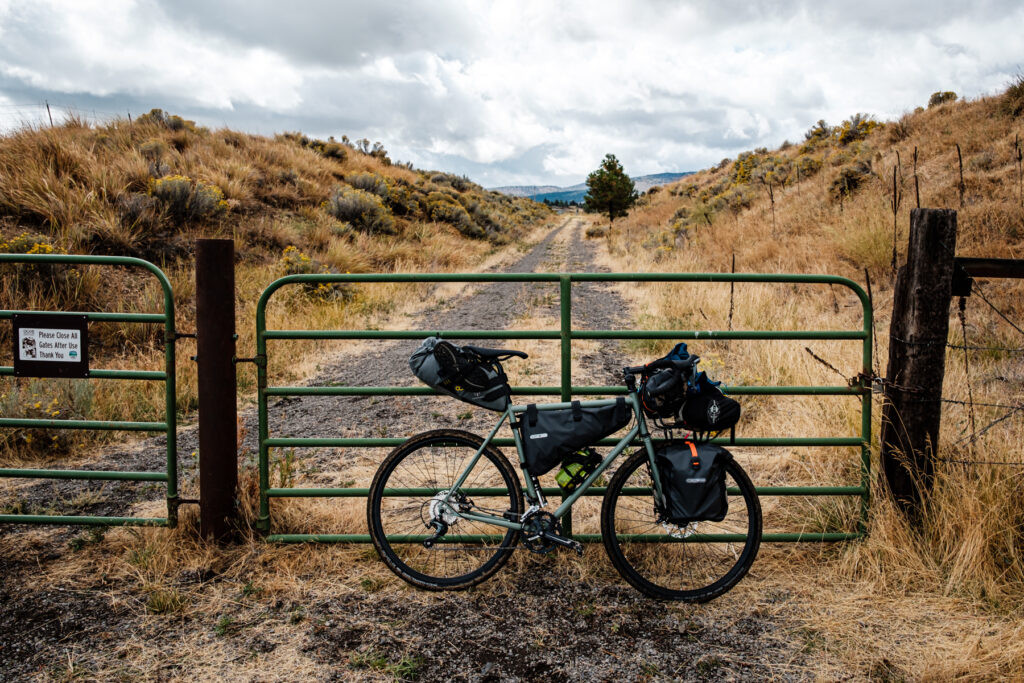 A Pelago gravel bicycle with front rack, frame bag and saddle bag.
A Pelago gravel bicycle with front rack, frame bag and saddle bag.
Pelago front racks are ideally suited for bike touring and bikepacking expeditions.
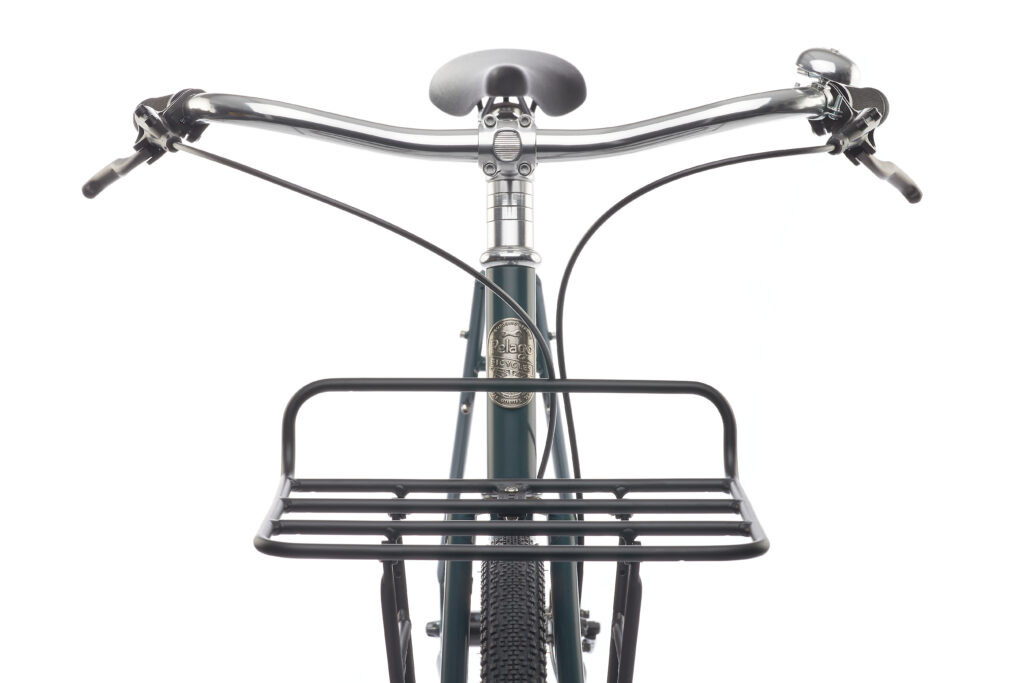 A stylish bicycle with a front rack.
A stylish bicycle with a front rack.
Aluminum Commuter front racks offer a blend of style and lightweight functionality for urban cyclists.
The Versatility of Front Bike Racks
One of the most common dilemmas cyclists face is whether to opt for front or rear loading. Front racks stand out for their exceptional versatility. They are adept at carrying various shapes and sizes of cargo, ensuring your belongings are always within easy reach without needing to dismount. Beyond practicality, many cyclists are drawn to the classic aesthetic of Porteur-style front racks, enhancing the visual appeal of their bikes.
Pelago Commuter Front racks are designed to be both simple and stylish, making them excellent choices for everything from daily commutes to extended bike tours. These racks provide multiple packing options; gear can be placed directly on top of the rack platform, or you can utilize side rails for panniers, offering secure and versatile cargo solutions.
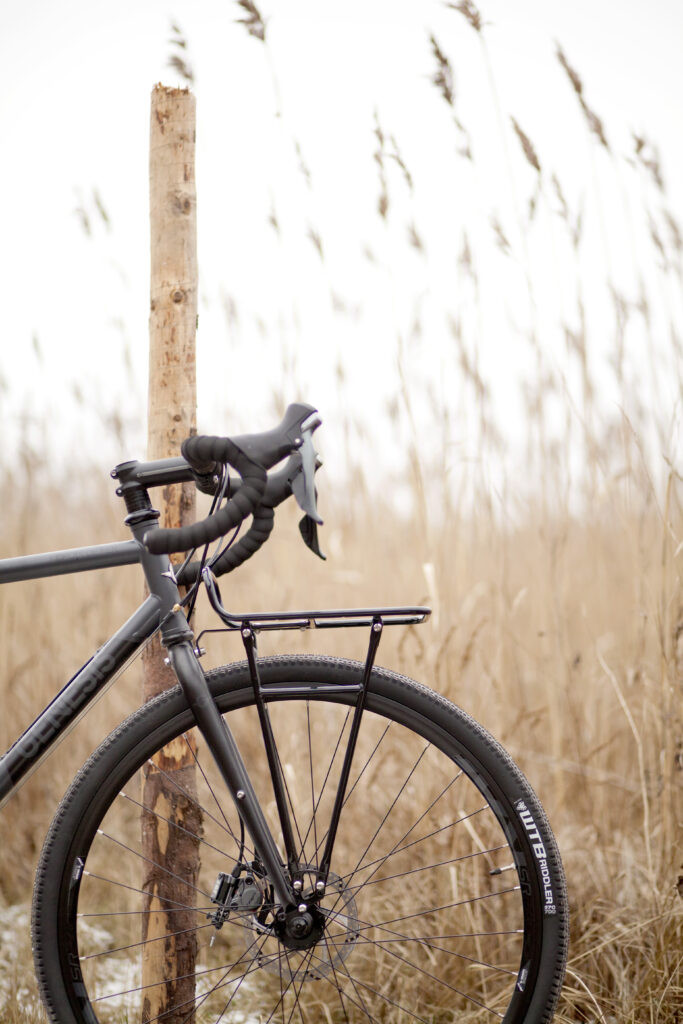 A road bike with a classic Pelago front rack.
A road bike with a classic Pelago front rack.
Commuter front racks are designed to be compatible with road bikes, even those with drop handlebars.
Aluminum vs. Stainless Steel: Choosing the Right Material
When selecting a front bike rack, material choice is crucial, often boiling down to weight and durability. If you prioritize a lightweight and budget-friendly option, aluminum front racks are an excellent choice. The aluminum Pelago Commuter front rack, for instance, has a maximum load capacity of 10 kg (approximately 22 lbs), suitable for daily errands and lighter cargo.
However, for cyclists who demand robustness and longevity, especially when carrying heavy loads or tackling challenging terrains, stainless steel front racks are the preferred solution. Steel racks can support loads up to 15 kg (approximately 33 lbs) and come with extended warranties, sometimes up to 30 years, highlighting their durability. Despite their strength, stainless steel racks only add a minimal 280g (around 0.6 lbs) of extra weight compared to their aluminum counterparts in the medium size.
It’s important to note that while stainless steel racks have a higher overall load capacity, the maximum load for the top platform remains 10 kg for both stainless steel and aluminum versions. The additional 5 kg capacity in stainless steel racks is intended for panniers mounted on the side rails.
Another difference lies in the finish: aluminum racks typically feature a matte finish, while stainless steel racks boast a glossy appearance.
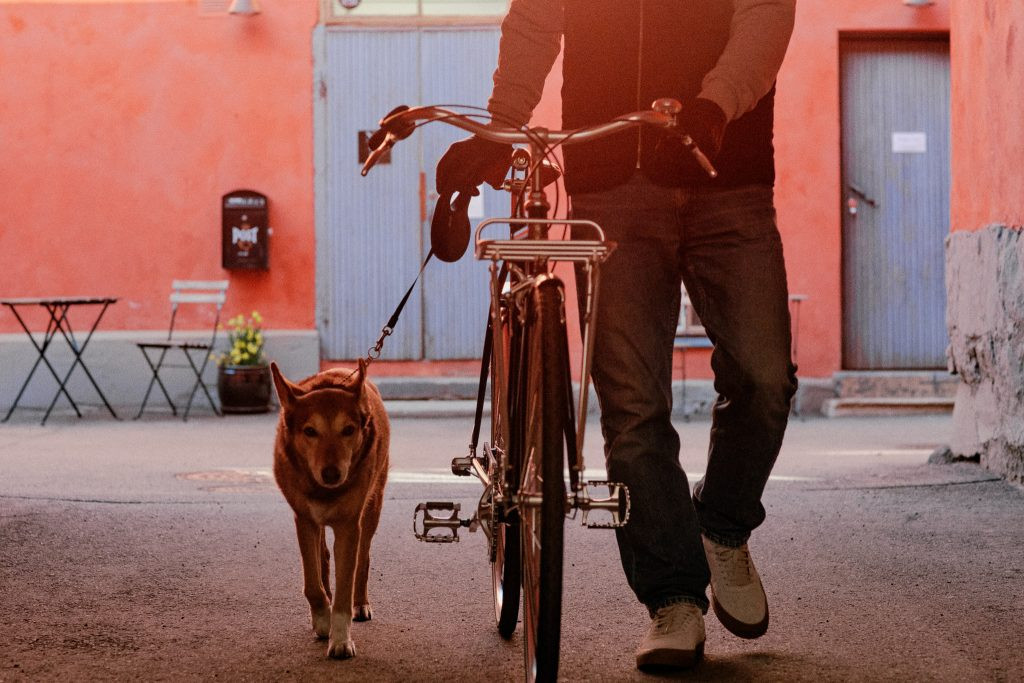 A man walking a dog and a bicycle with a front rack.
A man walking a dog and a bicycle with a front rack.
Pelago front racks are recognized for their timeless and functional design.
Rack Sizing: Small, Medium, or Large?
Front racks are available in various sizes to accommodate different needs and bike styles, typically ranging from small to large.
Small size racks, exclusively in aluminum, are the lightest option. They are ideal for securing compact bags, rain gear, or functioning as lightweight pannier supports, perfect for riders who prioritize minimalism and speed.
Medium size racks are arguably the most versatile, striking a balance between cargo capacity and bike profile. They offer ample support for gear while maintaining a relatively slim silhouette, often working more seamlessly with drop handlebars compared to larger racks. Medium racks are compatible with many rack bags, including models from Pelago and Restrap, offering flexibility in cargo management.
Large size racks are designed for heavy-duty use, often referred to as messenger racks, suited for cargo hauling. The expansive platform provides maximum support, making them the top choice for transporting bulky items, packages, banana boxes, sports equipment, and more.
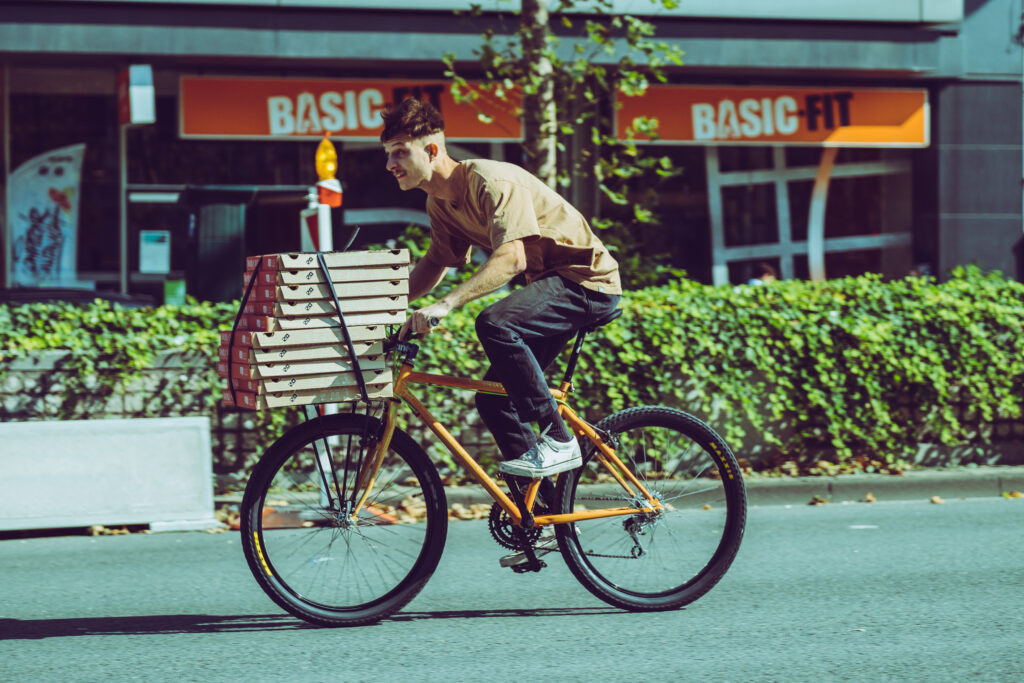 A man is riding a bicycle fast with ten pizza boxes packed on a front rack.
A man is riding a bicycle fast with ten pizza boxes packed on a front rack.
Large Commuter front racks are the best choice for demanding tasks and carrying oversized items like delivery packages or pizza boxes.
Ensuring Compatibility and Installation
A common concern when choosing a front bike rack is compatibility. Commuter front racks typically come with three different mounting adapters to ensure they fit the majority of bicycles with 26” or 28” wheels that are equipped with a bolt hole drilled in the fork crown – this fork crown hole is essential for installation. It’s important to note that only the platform size changes across different rack sizes; the side stays remain consistent, meaning small and large racks will fit bikes with varying tire sizes equally well.
The included mounting adapters allow for installation using fender eyelets, rack eyelets, or the 9 mm axle. During installation, it’s often beneficial to be adaptable and explore different configurations if the initial fit seems problematic. Experiment with spacers, adjust the angle of mounting pieces, or try inverting them. A useful tip for bikes with cantilever brakes is to flip the fork crown bracket upside down, which has proven effective in numerous cases.
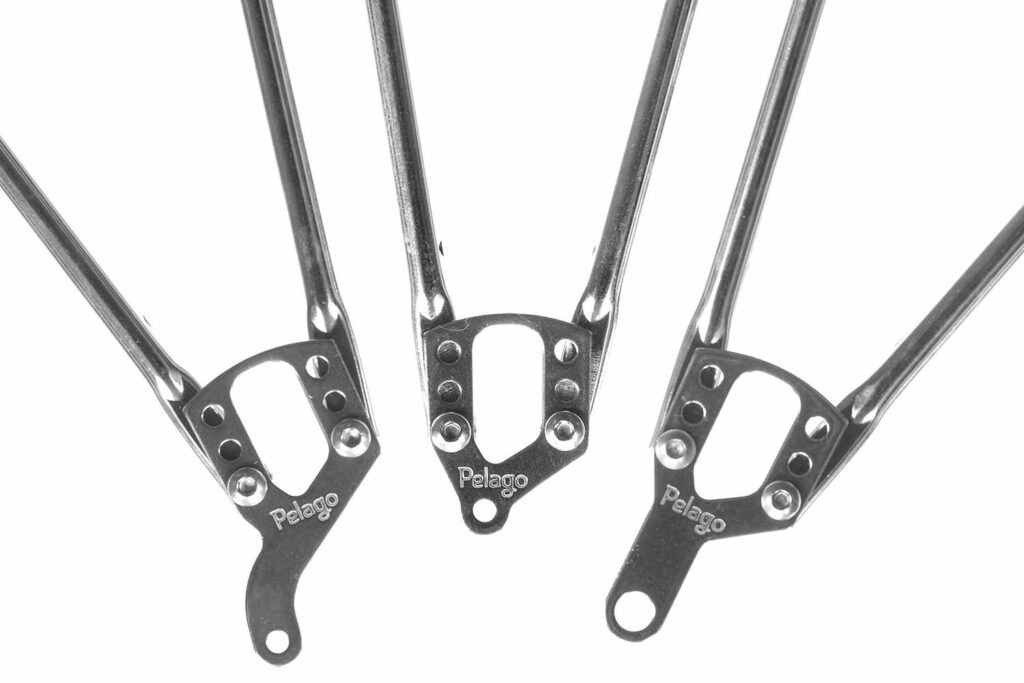 Commuter front racks and Rasket adapters
Commuter front racks and Rasket adapters
Commuter front racks and Raskets include three adapter types to fit fender eyelets, rack eyelets, or 9 mm axles.
Rasket: The “Throw and Go” Alternative
While front racks excel at carrying packages and panniers, the Pelago Rasket offers a convenient “throw and go” solution, ideal for grocery bags, jackets, backpacks, and other everyday items. Raskets are shallower than traditional wire baskets, which allows them to fit bikes with lower head tubes more easily.
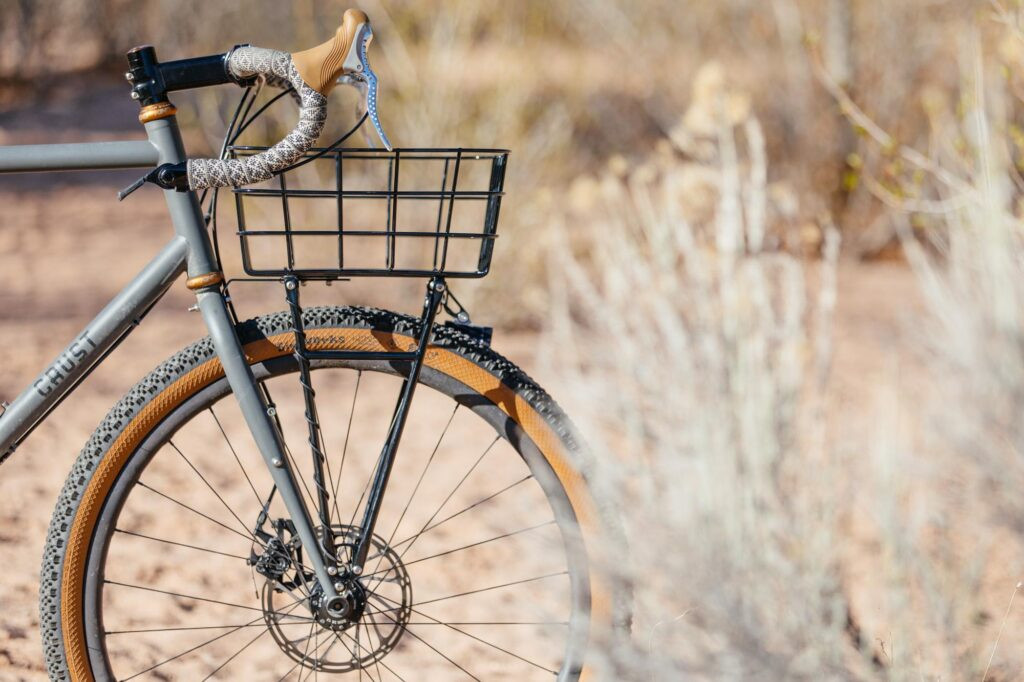 Pelago Rasket for basketpacking bike touring
Pelago Rasket for basketpacking bike touring
Raskets are robust and lightweight, suitable for both city errands and basketpacking bike tours.
Despite being lightweight, the Rasket is sturdy and strong. It shares the same mounting system and side stays as Pelago Commuter Front racks, enabling platform swapping between these models. The installation tips for front racks also apply to Raskets, ensuring a seamless setup.
Many cyclists who were initially dedicated rack users have become enthusiastic Rasket converts after experiencing its convenience. Consider yourself warned!
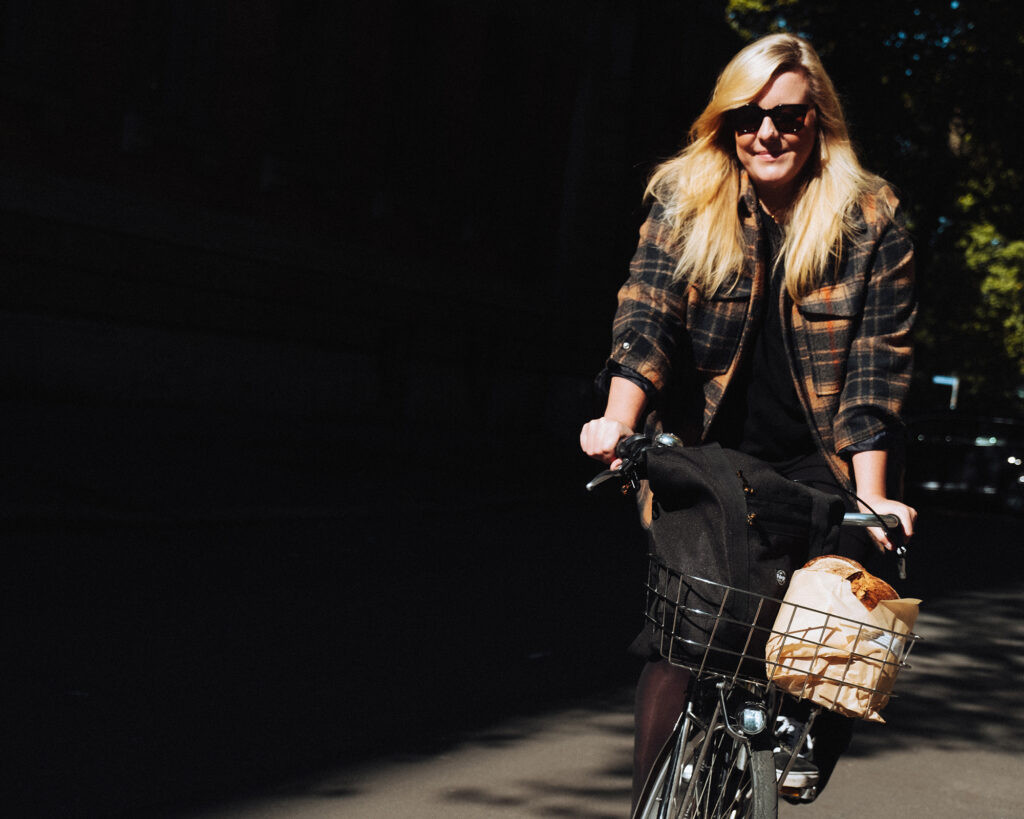 A woman riding a bicycle with a Rasket
A woman riding a bicycle with a Rasket
Use a Rasket to easily carry backpacks and groceries on your bicycle.
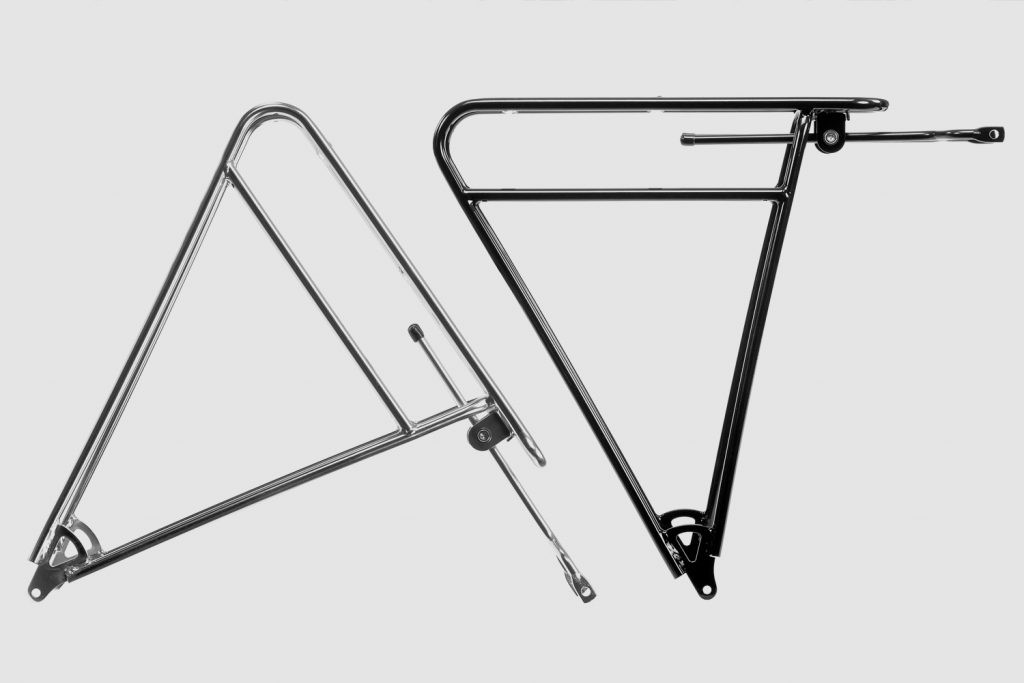 Pelago Commuter Rear Racks
Pelago Commuter Rear Racks
Commuter rear racks are versatile for both daily commuting and long-distance touring.
Rear Racks: Balancing the Load
While front racks are advantageous, loading heavy cargo onto the front can affect steering, requiring more effort to turn the handlebars. Steering is less impacted when weight is carried at the rear, making rear racks optimal for heavier loads. However, excessive rear weight can lead to “tail wagging,” emphasizing the importance of balanced weight distribution across the bicycle.
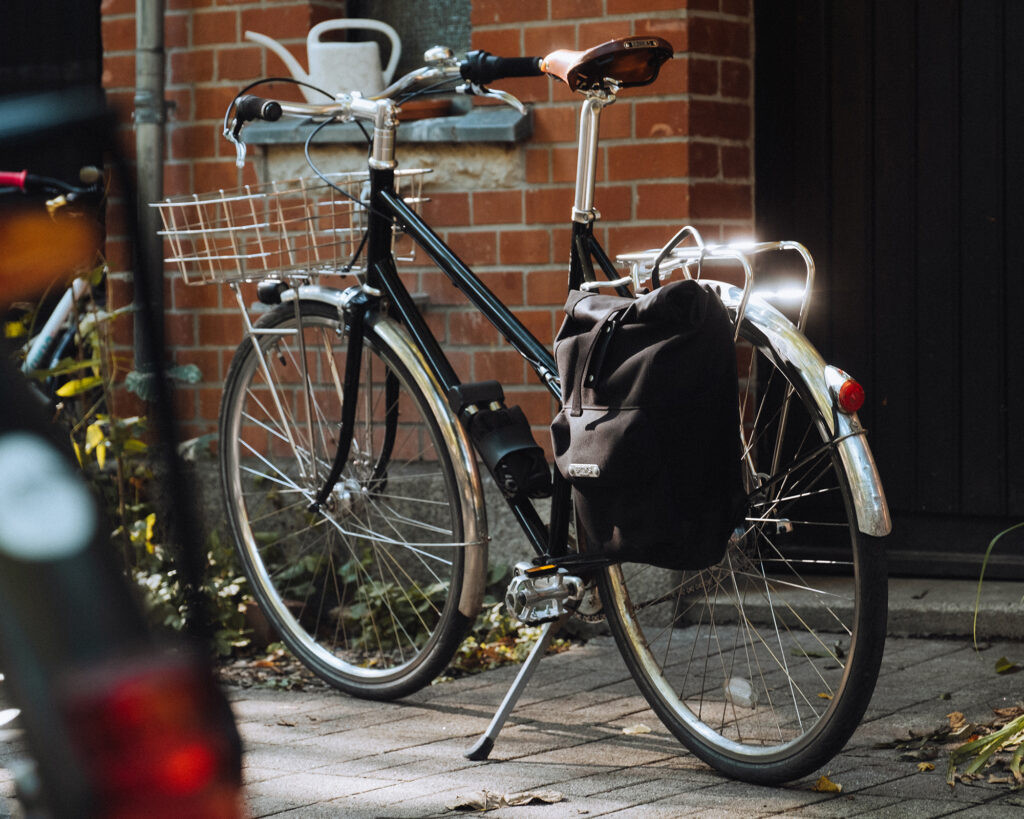 A bicycle with a rear rack and panniers.
A bicycle with a rear rack and panniers.
Pelago rear racks are equipped with rails for panniers, enhancing their touring capabilities.
Pelago Commuter rear racks are excellent for touring, daily commuting, and anyone who prefers using spacious panniers for laptops and other gear. The Pelago rear rack design is both elegant and robust, capable of carrying loads up to 25 kg (approximately 55 lbs). The pannier rails are designed to position weight slightly lower, improving stability and freeing up the top platform for additional cargo.
Pelago rear racks are designed for straightforward installation and are compatible with most 28” bicycles. For Pelago Stavanger owners planning to install both a Commuter rear rack and wide 55 mm aluminum fenders, a riser kit is available to facilitate installation.
Lowrider Pannier Supports: Lowering Your Center of Gravity
To enhance bike stability, especially when carrying panniers, keeping the weight as low as possible is key. Pelago Lowrider pannier supports are a valuable accessory for Pelago Front racks and Raskets. By replacing the original rack side stays with lowriders, panniers can be mounted lower on the rack. This lower center of gravity improves stability and makes panniers more accessible. Lowriders are particularly beneficial for touring on paved roads and paths. However, for rougher terrains or frequent city riding, lower-hanging panniers might be more susceptible to obstacles.
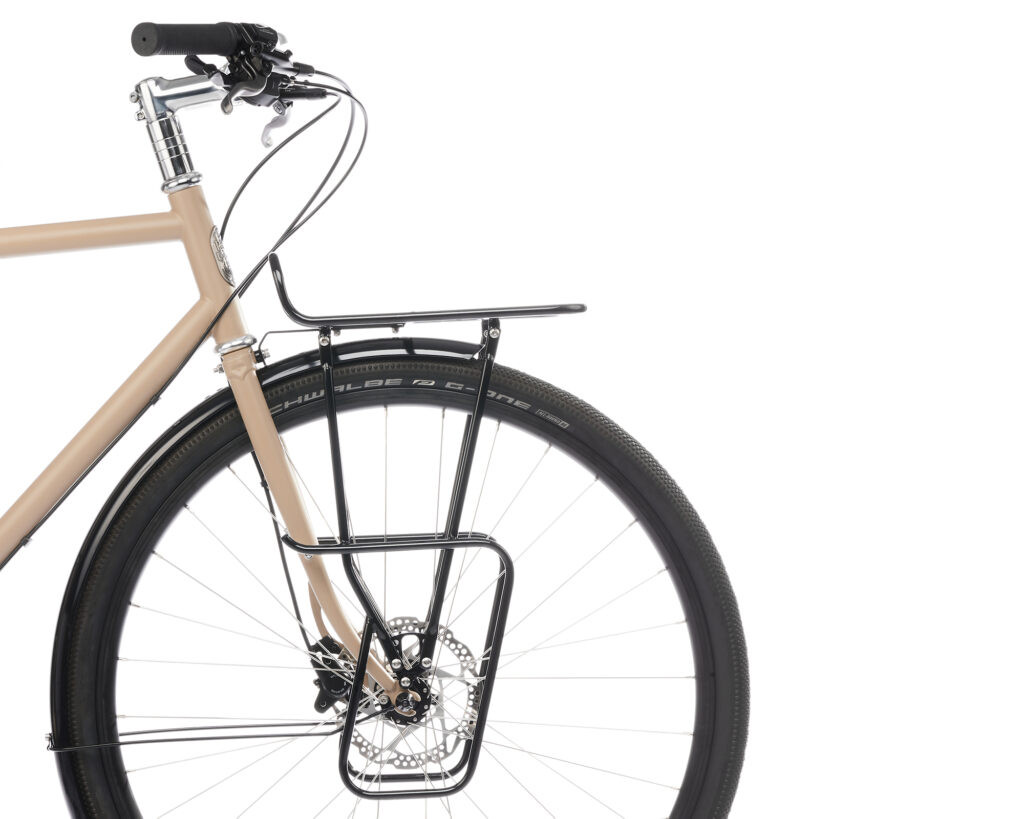 A studio shot of a Pelago bicycle with a lowrider front rack.
A studio shot of a Pelago bicycle with a lowrider front rack.
Easily convert your front rack into a lowrider rack for improved stability and pannier access.
Fork-Mounted Cargo Carrier: Compact and Convenient
The Pelago Fork rack is the newest addition to the rack family. This compact cargo carrier, or cargo cage, mounts directly to the fork, expanding the bike’s carrying capacity without the bulk of a traditional rack.
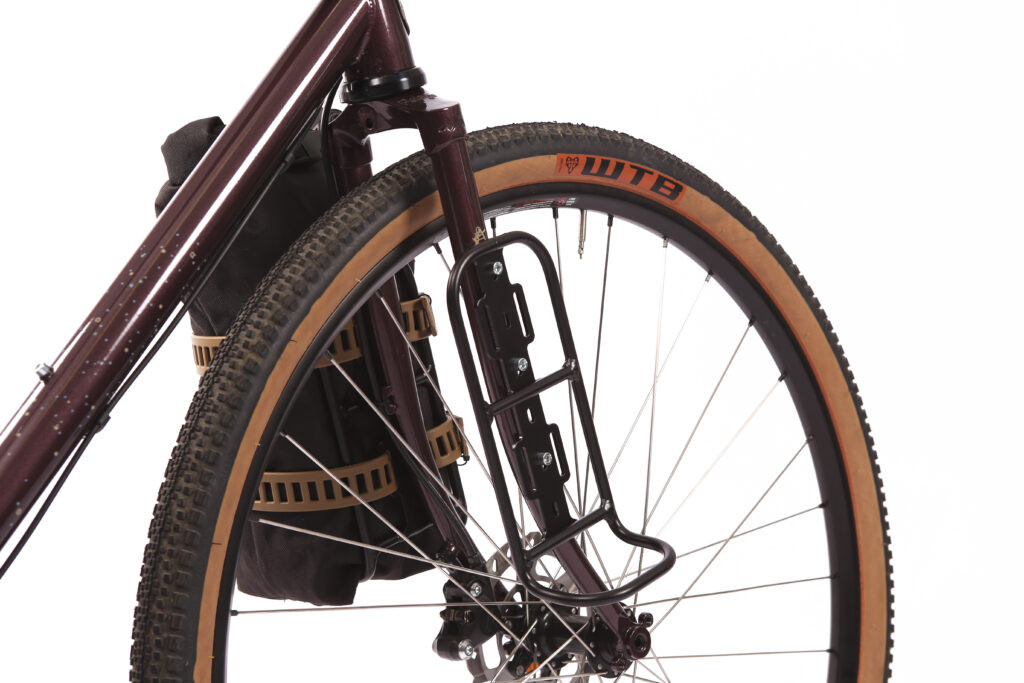 Pelago Fork rack mounted to a front fork.
Pelago Fork rack mounted to a front fork.
Cargo cages, like the Pelago Fork rack, are ideal for carrying small extra gear items.
Gear is secured to the Fork rack using straps. It’s especially useful for bikepacking when you need to carry a bit more than standard bag setups allow, such as extra water bottles or a sleeping bag.
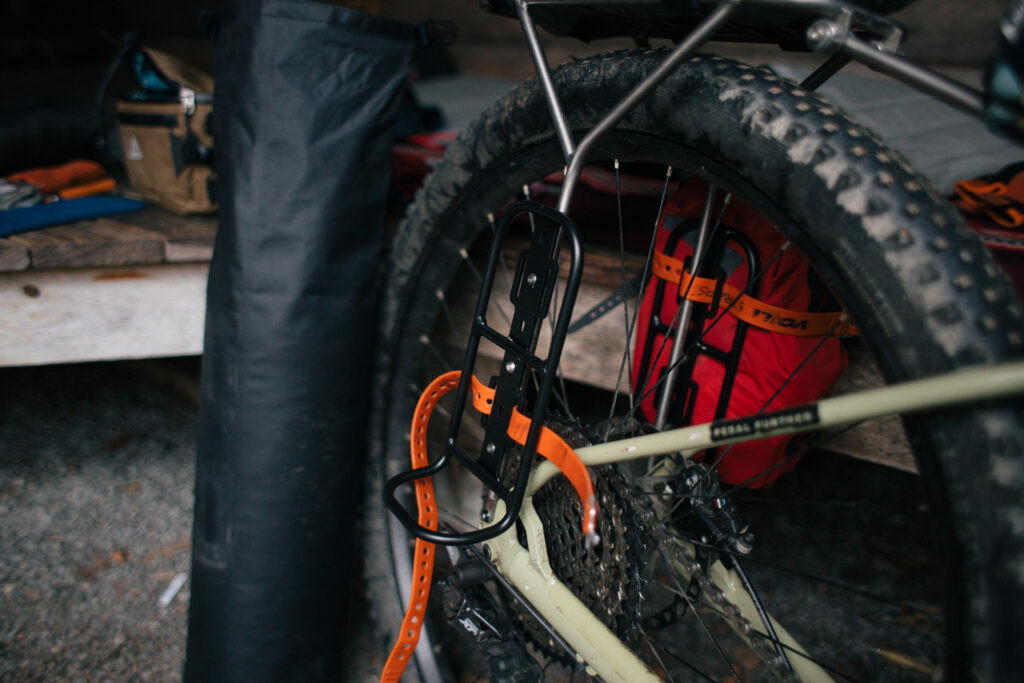 A fork rack with straps mounted to a bicycle rear rack.
A fork rack with straps mounted to a bicycle rear rack.
Secure your gear to the Fork rack with straps for a reliable and adaptable carrying solution.
The Pelago Fork Rack is designed to fit a wide range of forks thanks to its six mounting holes, although a full three-bolt mount is recommended to maximize its 3 kg (approximately 6.6 lbs) load capacity. This makes it particularly well-suited for forks with triple mounts, such as those found on the Pelago Stavanger. The multiple mounting holes also offer flexibility in height adjustment.
Still Unsure?
If you’re still uncertain about which front bike rack or cargo solution best suits your needs, don’t hesitate to contact us at [email protected] or reach out to your local Pelago dealers. This guide is based on common questions from our community, and we’re planning a follow-up guide focused on bags and rack pairings, so stay tuned for more insights!
 A Pelago tour bike leaning to a tree on a summer night in front of a beautiful lake view.
A Pelago tour bike leaning to a tree on a summer night in front of a beautiful lake view.
Transform your bicycle into a capable touring machine with the right bicycle racks.
